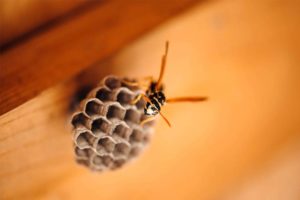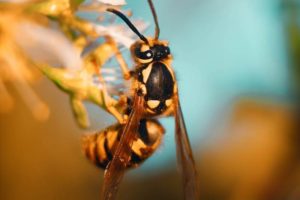Fire ants are social insects that nest in the soil and typically don’t “attack” unless provoked when their colony or nest is disturbed. But that doesn’t mean that it’s safe to have them nesting in your vicinity. Keep reading to learn more about fire ants: what they are, where they live, their habits and behavior, and how to avoid their nasty sting!
Fire Ant Identification
There are multiple species of both native and imported fire ants located through the southern portion of the United States. Below, you’ll find key information for identifying these six different species of fire ant. The most important thing to note about all species is that, once provoked, they can sting (bite) you multiple times and ten to attack as a horde.
Different Species of Fire Ant
First, we’ll review the imported fire ant species within the U.S. provided by “Species of Fire Ants in the United States | Orkin“:
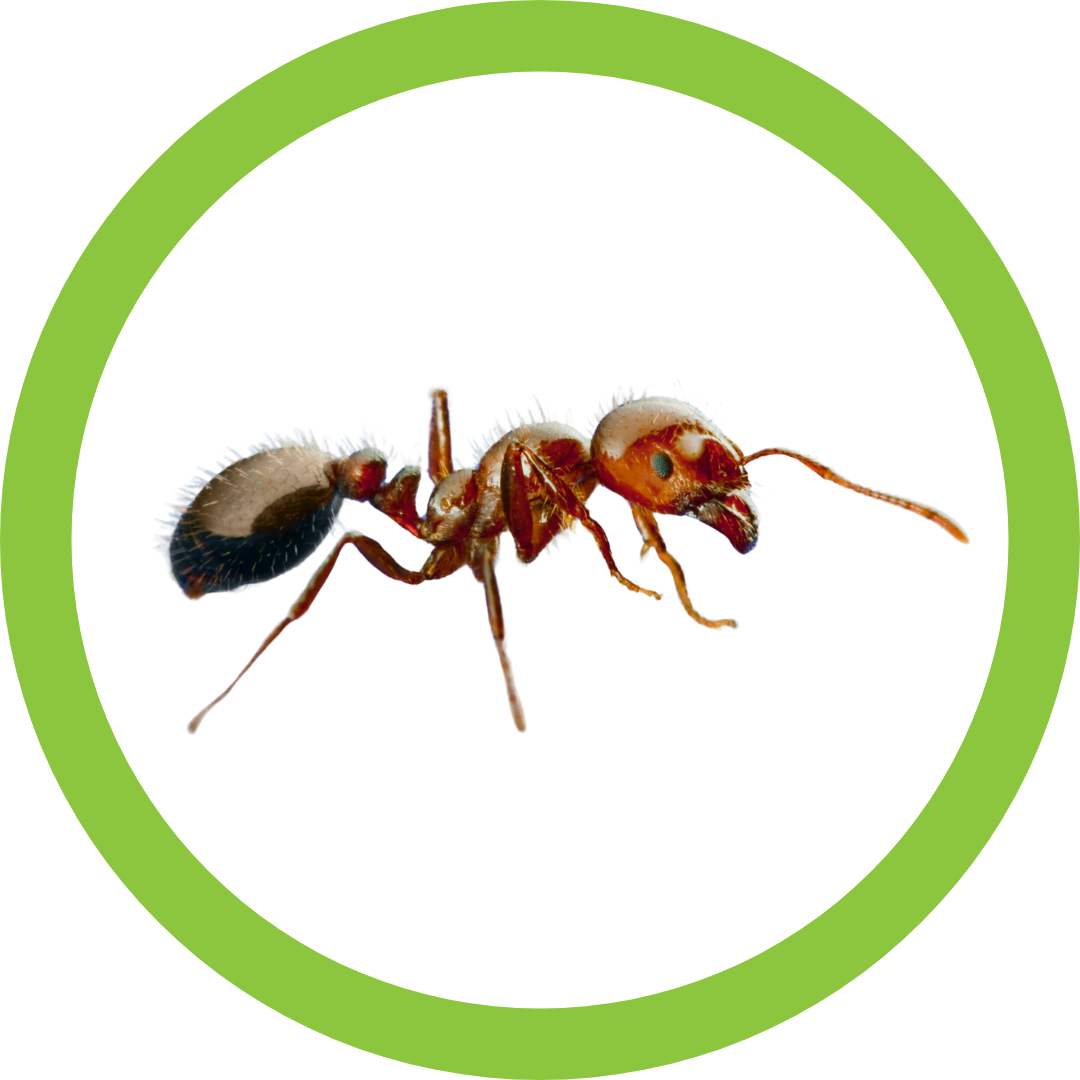
Red Imported Fire Ant
The Red Imported Fire Ant (Solenopsis invicta), which is also known colloquially as RIFA, was accidentally imported in the U.S. in 1933. RIFA is the species with the most serious medical threat posed from their sting. This species is known to be extremely aggressive, with high levels of reproduction, few natural predators, and a painful sting. They also can survive extremely difficult environmental situations. RIFA tends to displace other ant species and are known to “dominate” their environment once their nests are established. RIFA can be found throughout the southeastern U.S. from North Carolina to Texas; they have also been seen in New Mexico and California. RIFA is the most important species to note due to their aggressive behavior, painful sting, and the potential medical threat that comes from that sting.9
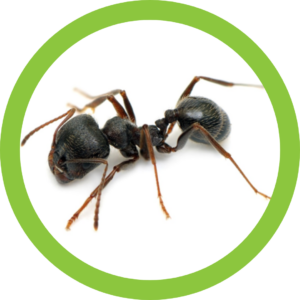
Black Imported Fire Ant
The Black Imported Fire Ant (Solenopsis richteri) was mistakenly imported into the U.S. in 1918 through a port in Mobile, Alabama. This species wasn’t considered different from RIFA until 1972. They have a limited range compared to other fire ant species and can be found in parts of Mississippi, Georgia, Alabama, and Tennessee. However, it’s important to note that black imported fire ants are becoming increasingly scarce in the U.S. as RIFA becomes the more prevalent species of imported fire ant.
Next, we’ll review the species of native fire ants located in the U.S.:
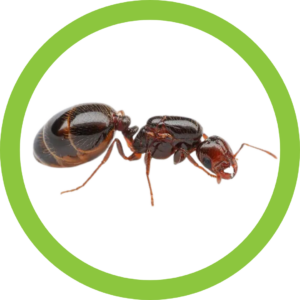
Native Southern Fire Ant
The Native Southern Fire Ant (Solenopsis xyloni) closely resembles the imported fire ant RIFA but can be distinguished by their brown or black color. This species of fire ant is spread out throughout the southern U.S. from Texas to North Carolina and can also be found in the southwestern states, including California and Hawaii.
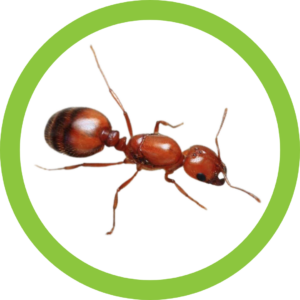
Tropical Fire Ant
The Tropical Fire Ant (Solenopsis geminata) are found worldwide but can be found in the U.S. from Texas to Florida, up into South Carolina.

Desert Fire Ant
The Desert Fire Ant (Solenopsis aurea and Solenopsis amblychila) can be found throughout the southwest of the U.S. The main differentiator between these two species is that Solenopsis aurea is found below elevations of 6,600 ft, while Solenopsis amblychila can be found in elevations between 5,000 to 8,250 ft. Solenopsis amblychila have been found, specifically, in Arizona, west Texas, and in the Doña Ana Mountains in New Mexico.
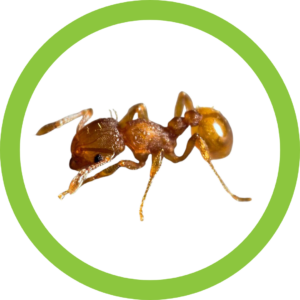
Little Fire Ant
The Little Fire Ant (Wasmannia auropunctata) can be found in the southeastern U.S. and have also been reported in Hawaii and LA County, California. This subspecies is slightly different than the others as they aren’t known for attacking in stinging swarms. They also typically go undetected as their workers move slowly, that is until they sting when disturbed.
Fire Ant NESTS
Although all species of fire ant create and live in nests, typically mounds on the ground, we’re going to focus on the nests of the most dangerous fire ant: the RIFA species.
RIFA fire ant mounds are usually around 61 cm in diameter and 18 cm high, although larger mounds have been documented. The queen and the rest of the brood live below the mound in a complex maze of chambers and tunnels. Their mound helps regulate the temperature for the brood, which helps them survive extreme temperatures and seasonal weather changes.6
The RIFA fire ant can build mounds in any kind of soil, but they tend to prefer “open and sunny” areas like pastures, parks, lawns, fields and meadows. Their mounds can also be found in logs and around stumps and/or trees and under or in buildings2.
Colonies of RIFA fire ants often migrate from one mound to another, and new mounds are usually found within several hundred feet of each other. At times, depending on weather, their mounds may be more difficult to see as RIFA fire ants tend to burrow deeper into the ground to avoid heat and drought.
Be very careful when out exploring or playing in the front yard, specifically in the spring and summer months, to avoid disrupting fire ant nests.


Fire Ant Habits
Fire ants, especially the RIFA fire ant species, can live in nests of up to 500,000 individual insects6. Most fire ant species prefer warmer climates but are known to survive in temperatures below freezing8 . Fire ants also have various behaviors that are different than other ant species8: fire ants tend to swarm their prey or victims and all sting at once if provoked, they typically don’t go further than 98 ft (or 30 m) from their nest, and they are omnivorous, eating everything from plant material to small animals. Fire ants have been observed to be spreading further south and west within the U.S., although extreme cold weather in the north prevents them from migrating further5. Their migration is also dependent on availability of ground or surface water.Fire Ant Venom Explained
First, let’s quickly review fire ant venom and how it differs from bee, wasp, and hornet venom. Bee, wasp, and hornet venom is largely composed of protein-containing aqueous solutions, while fire ant venom is made up of 95% water-insoluble alkaloid.1
Fire ant venom is composed of four major allergenic proteins that are responsible for the allergic reaction in animals (and people!). Imported fire ant venom is highly cross-reactive and the piperidine alkaloids found in their venom cause the localized necrotic and hemolytic effects after their sting, which causes pain.1
Symptoms of Fire Ant Venom Allergic Reactions
Similar to reactions to a bee sting allergy, local reactions to fire ant venom typically involve symptoms within the same region of the body, although there can be swelling within a larger area. Local reactions typically last a couple of days before subsiding.3
If the entire body reacts to fire ant venom, that would be conclusive of a systemic reaction. Symptoms of a systemic reaction include stomach cramps, diarrhea, nausea and/or vomiting, swollen tongue or trouble breathing and/or swallowing.3
The most severe reaction to fire ant venom would be anaphylaxis. Read more about anaphylactic reactions below.
Anaphylaxis Caused by Fire Ant Venom
Anaphylactic reactions from fire ant venom have been seen in both animals and humans and typically occur within one hour after a sting.1 Since one ant typically stings multiple times as they swarm their victim, the likelihood of increased venom content throughout the affected area is common.7
Anaphylaxis typically occurs in those who are allergic after they have been sensitized by a previous sting. Symptoms of an anaphylactic reaction include flushing, generalized urticaria, angioedema, laryngeal edema, bronchospasm, or loss of consciousness.7 If left untreated, a severe allergic reaction can be life-threatening. If signs of anaphylaxis are present after the initial sting, call 911 immediately.
Treatment for Fire Ant Stings
Before starting any treatment option, a potential patient must go through allergy testing to ensure the correct treatment is provided. If you experience a mild reaction or sting, the best course of action would be to immediately brush off the fire ants, wash the affected skin with soap and water, take an oral antihistamine, apply hydrocortisone cream to the affected area, and use cold compresses to reduce inflammation and pain on the site of the sting.3
If you experience a systemic or anaphylactic reaction, immediately call 911, and then take an oral corticosteroid like prednisone, apply prescription strength steroid creams/ointments, and in emergency situations, administer an epinephrine injection.
The best treatment for patients who fit the correct diagnostic criteria is subcutaneous allergy immunotherapy, or AIT. AIT provides lasting relief for people with severe allergies to various allergens, including fire ants.
Avoid Being Stung
There are some simple prevention strategies that you can implement in your daily life to avoid potential fire ant stings and allergic reactions. This includes applying insect repellant, keeping a lookout when outside for fire ant mounds, avoiding disturbing any nest, mounds, or colonies near you, and wearing long sleeves, pants, and close-toed shoes when outside. If you do find a fire ant mound or nest on your property, contact pest control to safely remove the colony.3
- “Ant Venom – an Overview | ScienceDirect Topics.” Www.sciencedirect.com, www.sciencedirect.com/topics/pharmacology-toxicology-and-pharmaceutical-science/ant-venom#:~:text=The%20piperidine%20alkaloids%20found%20in.
- “Biology.” Texas Imported Fire Ant Research and Management Project, fireant.tamu.edu/learn/biology/.
- “Fire Ant Bites: What They Look Like, Treatment & Home Remedies.” Cleveland Clinic, my.clevelandclinic.org/health/diseases/23362-fire-ant-bites.
- “Fire Ant Facts | Mississippi State University Extension Service.” Extension.msstate.edu, extension.msstate.edu/content/fire-ant-facts.
- “Fire Ant Frequently Asked Questions | Texas Imported Fire Ant Research and Management Project.” Tamu.edu, 2020, fireant.tamu.edu/manage/faq/.
- “Fire Ant Nests, Hills, Mounds: Range of Fire Ant Habitats & Climates | Orkin.” Www.orkin.com, www.orkin.com/pests/ants/fire-ants/fire-ant-nests-hills-and-range.
- Kruse, Brian, et al. “Fire Ant Bites.” PubMed, StatPearls Publishing, 2021, www.ncbi.nlm.nih.gov/books/NBK470576/.
- Program, National Fire Ant Eradication. “Behaviour.” Www.fireants.org.au, 7 Feb. 2022, www.fireants.org.au/look/biology-and-ecology/behaviour#:~:text=Fire%20ants%20are%20not%20like.
- “Species of Fire Ants in the United States | Orkin.” Www.orkin.com, www.orkin.com/pests/ants/fire-ants/species-of-fire-ants-in-the-united-states.




